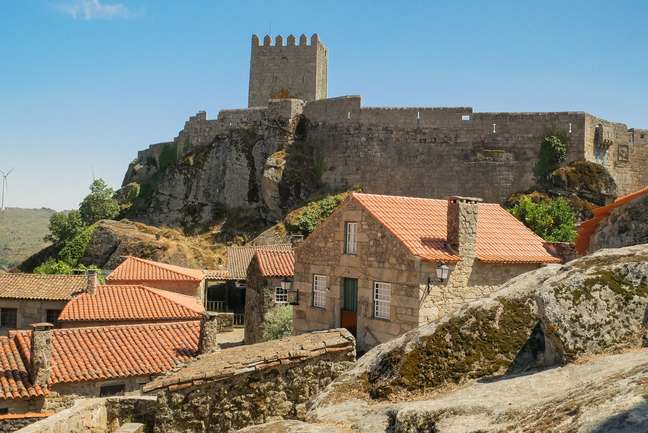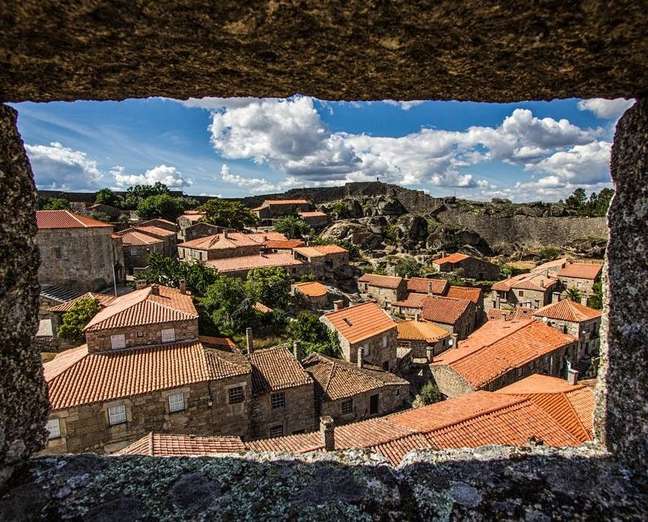All built in granite, its few streets hold true architectural jewels.
The end of the afternoon is greeted by coloring the mountain sea in the Beira Interior region red. Inside the houses the crackling of firewood begins, both to warm the body and to warm the soul; or even to prepare the delicacies of game which are the specialty of the region. When the wind normally turns (and howls), the tiny Sortelha retreats behind the lace curtains of the windows, at the foot of the fireplaces and stoves, around the tables. We are in the center of Portugal, at the foot of the Serra da Estrela, a region close to the border with Spain that saw the emergence, in the Middle Ages, of an infinite number of walls, castles and fortresses to protect the territory.

Sortelha was born like this, on evidence of settlements dating back to the Iron Age. At the behest of King Sancho I, a Romanesque-Gothic castle was built in the 12th century on top of a 760 meter high mountain. Later came Manueline influences and what you see today is a fascinating and well-preserved mix of different periods from the region’s past. It is possible to walk part of the walls that surrounded the entire village in the shape of a ring (hence the name, which derives from sortija, alliance in Spanish). The view that opens up from your surroundings goes for miles and miles along the horizon. Detail: carefully you can see a recently rebuilt part. This is the section that was dynamized during a clash with Napoleon Bonaparte’s troops. Here you can breathe history at every corner.

Built entirely of granite, Sortelha is a citadel of few streets, few houses and no more than 500 inhabitants. A short walk to the center reveals real architectural jewels. To begin with, there are four “official” gates that previously controlled the local access, one of which is impressively carved into the rock. In Largo do Pelourinho, built in 1510 by King Manuel, the old building that served as a town hall and prison is still well preserved (each function on a different floor, of course). Not far away you can see the Governor’s House, the 14th century Mother Church, curious fountains and even a 30-meter stretch of an old medieval pavement.
And then we return to the red late afternoon, the wind, the smell of wood. Secure a seat on a sofa in the Welcome bar (Rua da Mesquita), order a wine and have a leisurely toast to the calm of the countryside. When hunger strikes, head to one of the two best restaurants in the area. It could be D. Sancho, famous for lamb stew, or the Celtic , which makes a delicious lamb stew (which is what the Portuguese call the baby lamb). If it is autumn-winter, hunting season, get ready to dare in recipes based on hare, deer, wild boar, partridge … and chestnuts! What about the day after? Start all over again …
The village has no hotels, but there are beautiful houses where you can spend days without haste. One of the best is the Casa da Lagariça, made of stone in the 18th century and with a mill once used to crush grapes to make wine. It has three bedrooms and can accommodate up to 8 people.
Source: Terra
Benjamin Smith is a fashion journalist and author at Gossipify, known for his coverage of the latest fashion trends and industry insights. He writes about clothing, shoes, accessories, and runway shows, providing in-depth analysis and unique perspectives. He’s respected for his ability to spot emerging designers and trends, and for providing practical fashion advice to readers.







